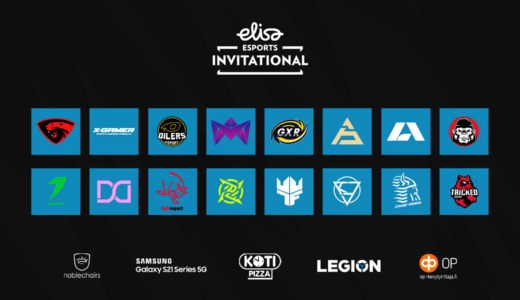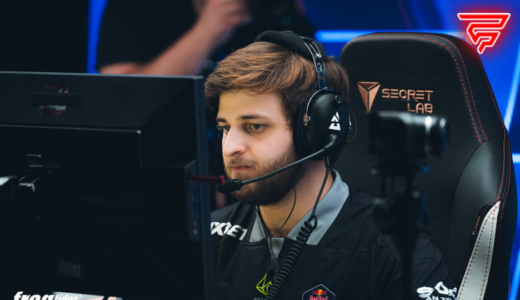There are many gaming laptops out there, but not all of them are created equal; this is especially true for the 15.6″ segment of the market. We’re talking about the most standard, run-of-the-mill screen size available, a diagonal that is pretty much synonymous with laptops in general. Nowadays, though, most folks prefer to go for something a bit smaller (like 14″ or perhaps even 13.3″) but for those looking to game on-the-go it’s still hard to beat the sheer immersion and enjoyment that the 15.6″ diagonal brings to the table.
It might be old news, but it’s still the best way to game as far as laptops go.
Gaming laptops are quite a peculiar thing, so we’ll take a different approach for this piece. You can already find a slew of articles online that’ll just list the best options out there and call it day. And while that’s generally a fairly acceptable method, it does leave a lot to be desired for the more studious among you. Instead of going down that route, we’ll talk about the things you should focus on the most when making a purchase, and how these elements invariably affect the entire user experience.
After all, you’ll be investing a sizable sum of money, and you should be as informed about the entire thing as possible. Saying that model X is better than model Y might be quick and easy, but it’s not going to provide you with the philosophy and thought process behind it all. And, of course, it is things like these that matter most in the grand scheme of things.
Are (15.6″) Gaming Laptops Worth It?
The answer to this question depends solely on your own use-case scenario. Some folks despise the very concept of a gaming laptop and, frankly, their reasoning makes sense. Why would you invest more money into a portable machine that will deliver a subpar gaming experience when compared to a standard mid-tier gaming PC? From a price-to-performance standpoint, gaming laptops simply don’t make a lot of sense. You’re basically paying more for less, with the only true benefit being sheer portability.
Comparatively speaking, gaming PCs are nowhere near as loud, expensive, hard to maintain, and prone to malfunctioning. But they’re not portable which, frankly, is their biggest drawback. Now sure, some people don’t want to game on-the-go — for these individuals a standard gaming PC is undoubtedly the better option. If, however, you’re often commuting and want to game during your downtime, then you simply have to go with a laptop; no other choice will get the job done.
Some brands, however, provide more bang for your buck than others, and there are even a couple of them that charge a bit of extra for their premium enclosures and utmost attention to detail. Either way, there’s something for everyone’s budget!
Things to Focus On
Build Quality
For some, this part is absolutely paramount. Others, however, couldn’t care less. Either way, build quality should definitely be a top priority. Plastic enclosures are still a thing and you’d be wise to circumvent them as much as possible. And, frankly, it’s not just the fact that they don’t feel nice to use — they often tend to break or deform in some way over time.
They creak under pressure, attract fingerprints like there’s no tomorrow, they often have bad or subpar hinges, and are mostly geared towards budget-oriented buyers. They’re not a bad purchase per se, but they’re just not going to result in an enjoyable overall experience.
Build quality is the first thing manufacturers tend to skimp on but it’s arguably not the worst.
Screen
This is where things get downright ugly. A bad screen (or a mediocre one) is the first sign of a budget (gaming) laptop, regardless if it’s a 15.6″ model or not. Now, laptop displays (and displays in general) are a hole without an end and they deserve an entire article of their own, but the most important things you should keep track of are the following: Panel Type, Brightness, and Refresh Rate.
For the first, always try to go with an IPS panel as it provides the best overall viewing experience and has great viewing angles as well.
For brightness, never go below 250 nits. Frankly speaking, 300 nits should always be the bare minimum, but that invariably raises the price. You’re probably not going to game outside, but you still want a sufficiently backlit screen that’ll allow you to experience your favorite games the way it was originally intended.
Finally, there’s refresh rate. Frankly, it’s not the most important thing in the world, but it’s sure a nice addition. High refresh rate screens are generally found on mid-tier and high-end models, but they’re not always a necessity unless the model you’re buying has a sufficiently powerful graphics card. You won’t be able to harness the true potential of a 144 Hz screen, for instance, if your GPU can’t deliver an equal number of frames per second (or at least close to it), so just keep that in mind.
Processor
Many words were written on this topic — the famed Intel vs. AMD battle — so we’ll keep it as short and sweet as possible. AMD has the edge in nearly every regard, but if you’re looking to game (and not focus on any production workloads or rendering of any kind), then Intel is still more than sufficient for a good gaming experience, in no small part because of their stellar single-core performance.
If, however, you want the best thing available on the market today, then look no further than AMD’s 4000 or 5000 series of mobile Ryzen processors. They’re impossible to beat from a price-to-performance standpoint and are astonishingly powerful.
RAM
8GB of DDR4 RAM will generally be enough, but it’s best to aim for 16GB running in dual channel mode. This means your laptop will have two sticks of 8GB running in unison, rather than just one stick of 16GB. This will result in a noticeable boost in performance, both in Windows and gaming.
Graphics Card
As for the GPU of choice, it all boils down to which titles you want to play: are you an esports gamer or are more into triple A, narrative-driven titles? If it’s the former, then an entry-level gaming laptop will definitely do the trick. If it’s the latter, however, an RTX 3060 is pretty much the bare minimum. Maybe the upcoming 3050 Ti will also suffice, but it still hasn’t been released so we can’t really know for certain.
Overall Footprint
Never forget that a laptop is only as portable as its external power brick. It’s never just the laptop you’re bringing on your travels, unfortunately. And, as is the case with laptops, not all bricks are created equal.
Finally, most gaming laptops come with incredibly narrow bezels so while 15.6″ models in the past seemed obscenely large and unwieldy, today’s most popular options are mostly sleek, slender, and surprisingly portable.
What Are Your Options?
There are many great gaming laptops on the market in 2021. It’s hard to really single any specific model out, but we’d argue that the ASUS ROG Zephyrus G15 takes the cake. HP’s OMEN 15 is also a stellar option (and is surprisingly “cheap”), and the same goes for DELL’s G15 15 — they’re not as good-looking or well-made, but what they lack in build quality they more than make up for in price.
Lenovo also has a slew of great options in their LEGION line-up and, of course, there’s always Razer — their machines are superbly made and will take your breath away, but they definitely come at a cost.
The OMEN 15 would arguably be the best possible choice given its alluring price (the perfect all-arounder, if you will), but the ROG Zephyrus G15 isn’t trailing behind much, if at all!









